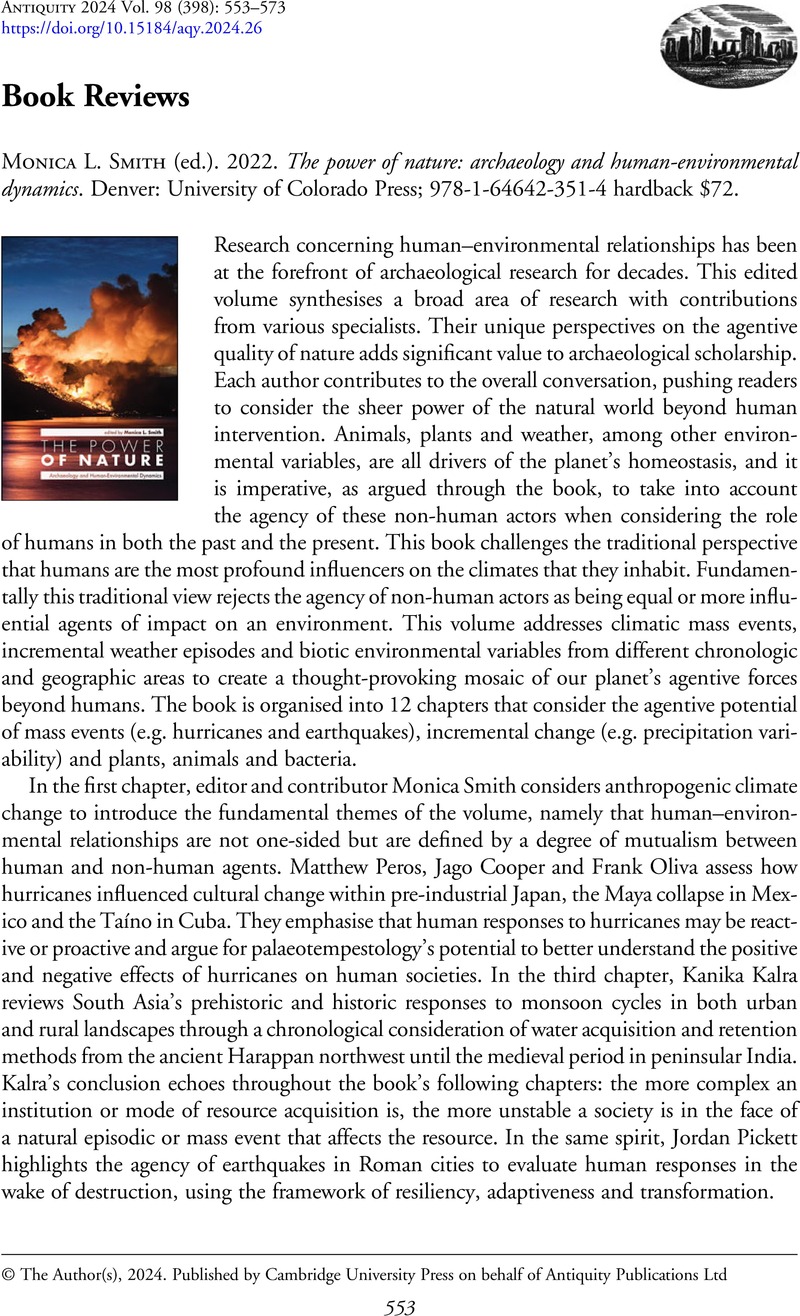No CrossRef data available.
Monica L. Smith (ed.). 2022. The power of nature: archaeology and human-environmental dynamics. Denver: University of Colorado Press; 978-1-64642-351-4 hardback $72.
Review products
Monica L. Smith (ed.). 2022. The power of nature: archaeology and human-environmental dynamics. Denver: University of Colorado Press; 978-1-64642-351-4 hardback $72.
Published online by Cambridge University Press: 23 February 2024
Abstract
An abstract is not available for this content so a preview has been provided. Please use the Get access link above for information on how to access this content.

- Type
- Book Reviews
- Information
- Copyright
- Copyright © The Author(s), 2024. Published by Cambridge University Press on behalf of Antiquity Publications Ltd


